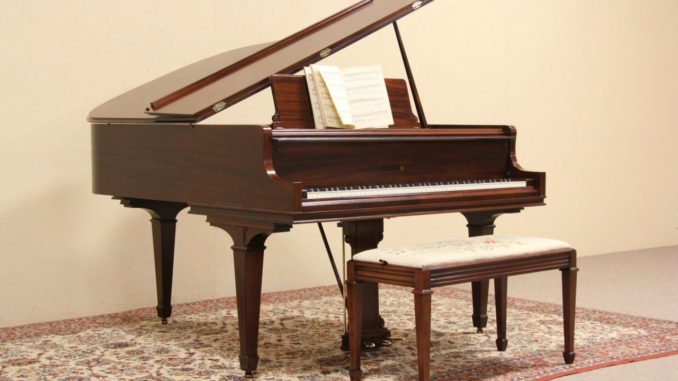
Clair de Lune (often misspelled as Claire De Lune), Claude Debussy‘s mesmerizing composition, has captivated audiences for over a century. Its ethereal beauty and melancholic charm have transcended the concert hall, gracing films, commercials, and even video games. But for aspiring pianists, the question remains: how difficult is Clair de Lune to play? Enjoy the free sheet music for Clair De Lune.

What Piano Grade Level is Clair De Lune?
The answer, like the moonlight itself, is not a simple binary of black and white. It’s a nuanced spectrum, influenced by individual skill, learning approach, and interpretation. So, let’s delve into the grayscale of Clair de Lune’s difficulty, offering a guide for pianists of all levels to navigate their own journey towards this moonlit masterpiece.
It should be noted that the Royal Conservation of Music rates it as Grade 10 while other piano teachers and schools rate it as 7 or 8 in difficulty.
For the Beginner’s Gaze:
At its core, Clair de Lune is a slow, lyrical piece with a repetitive left-hand melody and a relatively simple right-hand accompaniment. This makes it potentially accessible to beginners who have mastered the basics of hand independence and basic chords. Learning the main melody with its gentle arpeggios can be a beautiful and achievable goal, providing a taste of the piece’s magic.
However, even for beginners, the journey can be challenging. The delicate phrasing and subtle dynamics require a level of control and musicality that may not come naturally at an early stage. Additionally, the sustained legato playing demands smooth finger transitions, which can be tricky for new pianists.
Intermediate Steps in the Moonlight:
For pianists with some experience, Clair de Lune presents a significant step towards musical maturity. Mastering the full melody with its subtle nuances and expressive phrasing requires a deeper understanding of musicality and control. The right-hand accompaniment, while seemingly simple, demands precise fingerwork and independence to achieve the shimmering effect Debussy intended.
Adding further complexity are the chromaticism and modulations within the piece. These departures from the main key require a grasp of music theory and the ability to adjust one’s playing accordingly. Additionally, the pedaling plays a crucial role in shaping the atmosphere, adding depth and resonance to the music. Mastering its subtle nuances can be a rewarding challenge for intermediate players.
Advanced Artists and the Moon’s Full Glory:
For advanced pianists, Clair de Lune becomes a canvas for artistry and interpretation. The piece’s simplicity allows for profound musical expression, where every note, every nuance, becomes a brushstroke painting the moonlit landscape. The subtle tempo changes, dynamic shifts, and expressive phrasing demand a deep understanding of the music and the ability to communicate its emotional depth.
Technical challenges also come into play. The repeated notes in the left hand can become monotonous if not played with precision and variation. The octaves and leaps require agility and strength, while the trills and ornaments demand impeccable finger control and musicality.
Beyond the Grades: A Personal Journey:
Ultimately, the difficulty of Clair de Lune is a personal odyssey, not a fixed grade level. It’s a journey of growth and discovery, where each pianist encounters their own challenges and triumphs. Whether a beginner mastering the melody or an advanced artist weaving their own interpretation, the beauty of the piece lies in the journey itself.
So, for aspiring pianists drawn to the lunar glow of Clair de Lune, remember, the true challenge isn’t just conquering the notes, but embracing the piece’s emotional depth and sharing it with the world. Embrace the grayscale of difficulty, for in the shadows and the light, you’ll find your own unique path to mastering this timeless masterpiece.
Beyond Words: Resources for Your Journey:
- Listen to different interpretations: Immerse yourself in the diverse interpretations of Clair de Lune by renowned pianists like Arturo Benedetti Michelangeli, Glenn Gould, and Lang Lang.
- Seek guidance from a teacher: A qualified piano teacher can provide invaluable guidance in tackling the technical and musical challenges of the piece.
- Practice patiently and consistently: Mastering Clair de Lune requires dedication and patience. Break down the piece into smaller sections and practice them slowly and deliberately.
- Most importantly, enjoy the process: Embrace the beauty of Clair de Lune and let it guide you on your own musical journey.
Remember, the moonlit path to Clair de Lune is yours to explore. With dedication, passion, and a touch of moonlight magic, you can unlock the piece’s secrets and make it your own.
How different piano notes reverberate through a bowl of water
